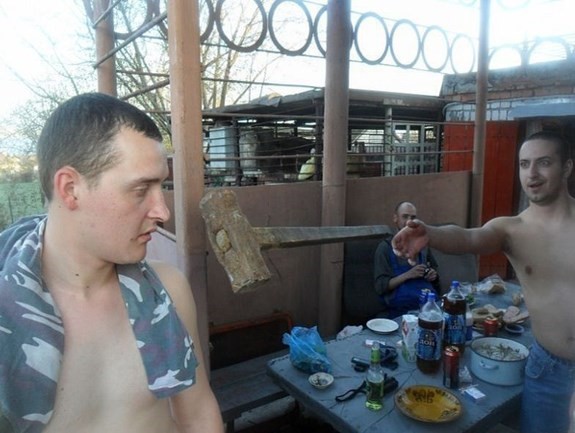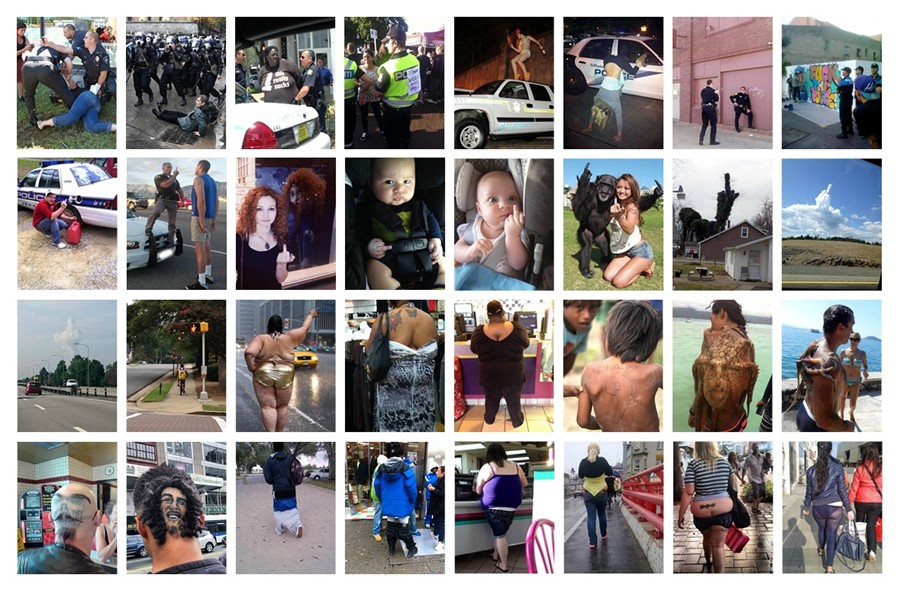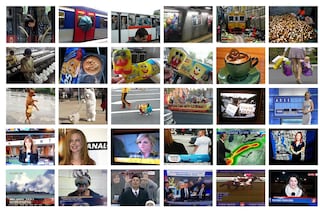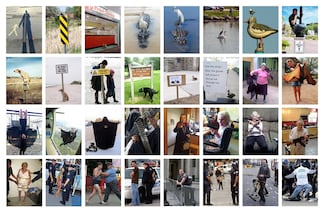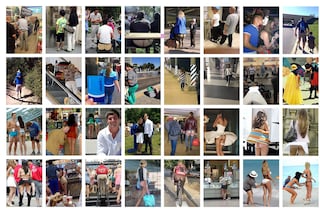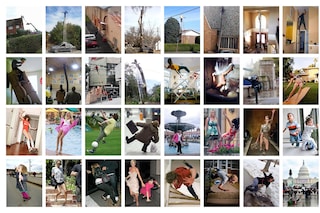Artist Dick Jewell pieces together 4,000 photos in an exploration of how capturing every moment in our lives shapes our behaviour both online and IRL
Archivist-artist-filmmaker-photographer Dick Jewell’s fascination with our desire to increasingly capture 'the moment' or 'the impending moment' around us and share it with, most often, complete strangers bathing in the glow of a Facebook feed, is, in itself, fascinating. In what feels like a 21st century extension of his 1978 book Found Photos – where, for a decade, he collected discarded photo booth images found in Brighton and London – his new book four thousand threads pedantically links 4,000 ‘threads’ (or images) in an intriguing narrative that weaves photo phenomena like 'bombing', 'cat bearding' and 'planking' with selfie sticks, President Obama and sink holes.
Tracing how such photo phenomena influences our behaviour as a society both online as well as in real life, Jewell writes in the book: "The urge to capture an instant seems to have become influenced by the opportunity to share it with the world”, adding, “The shared digital image is encouraging not only more photography but also new behaviours in its subjects.”
He continues: "What was once photographed and posted for its uniqueness and novelty becomes normalised through reconstruction and reiteration, or that maybe the captured behaviour is the normality in some instances and merely a revelation of a foreign culture."
Below we speak with him about the painstaking process of mining the internet and making sense of it all, ahead of his talk at the ICA with curator David Campany on 2 December, 2015 in honour of four thousand threads’ release.
How did you go about collecting these images and where did you find them?
Dick Jewell: I'd been in the habit of searching the web for images for my photo montages over the last couple of decades. I drift about on it, sometimes I'd find a site that’s image bound, for instance Urod. I couldn't read Russian, so instead I'd found where they bank their images for the site and then trawl through that instead, this way I can browse thousands of images a day. But in doing the book I found sites like Flikr, which again I like for the density of images, basically I tended to look wherever I can browse a lot of images quickly and then I'd do it for months on end!
“We are looking at humanity through their lenses” – Dick Jewell
How long did the process take to collect, to curate and then to edit them?
Dick Jewell: From start to finish the process took me two years, but when I began I didn't have a book in mind. I began with the intention of doing a moving montage using flashcards and a dozen digital picture frames on the subject of the capture of dramatic instances. Having loaded up a few flash cards and then watching them play, I realised the importance of the order that the images were in and how they juxtaposed (one another). It was in the process of putting them in an order, seeing them beside each other in folders on the computer screen, that I thought, ‘okay it’s a book’. The curating took a long time, some days I'd look through the story so far and find a thread missing and more often than not, to join the two unrelated images would take another dozen images and a day’s work.
After about a year I had a book which I titled three thousand threads and I started to look for quotes from printers. Basically the prices were scary but one printer was kind enough to mention that if my book was 15mm less wide it would save me £4,000, so I started to lay it out again. In doing so I totally changed the beginning narrative, then found more broken threads, as well as pictures that I realised had to have been shopped… six months later I ended up with a book called four thousand threads.
There's 'four thousand threads' here but what is the overarching story for you, or that you want to tell?
Dick Jewell: There’s not one overarching story as we're looking at four thousand stories here, we are looking at humanity through their lenses and the book falls between narrative and reference. So saying the story I wanted to tell was how the proliferation of digital cameras and the sharing of images online was not only influencing what people shot but also human behaviour and I wanted to tell the story in reference to now, 2015, as these changes occur and move on so rapidly.
Do you have a particular favourite photo or thread?
Dick Jewell: Oh, that is impossible. There are simply too many extraordinary instances captured in the book and on so many levels: some of my threads I'm pretty pleased with!
Jewell shares some of his favourites below. For more information on four thousand threads, click here


